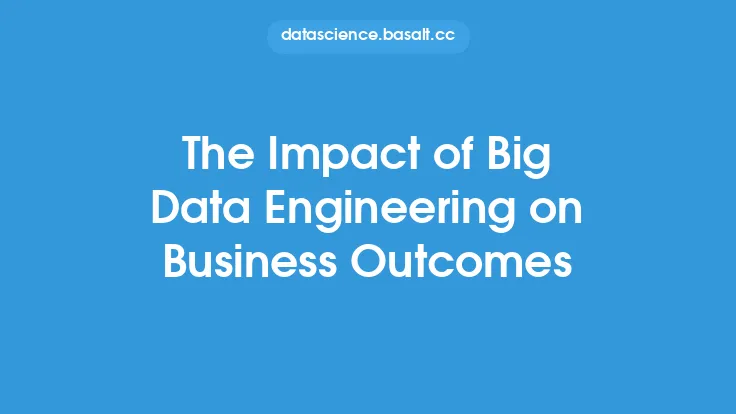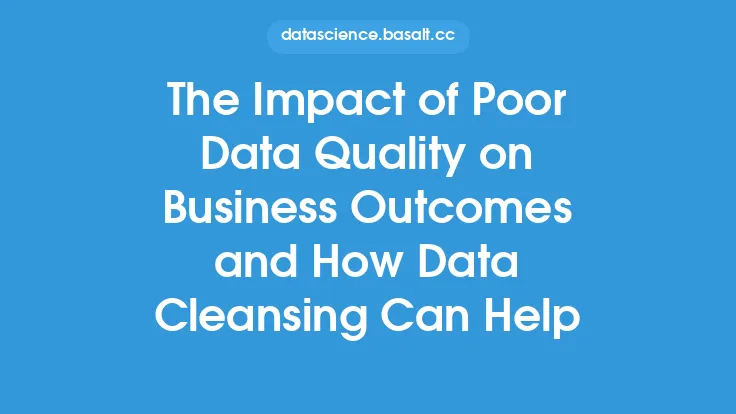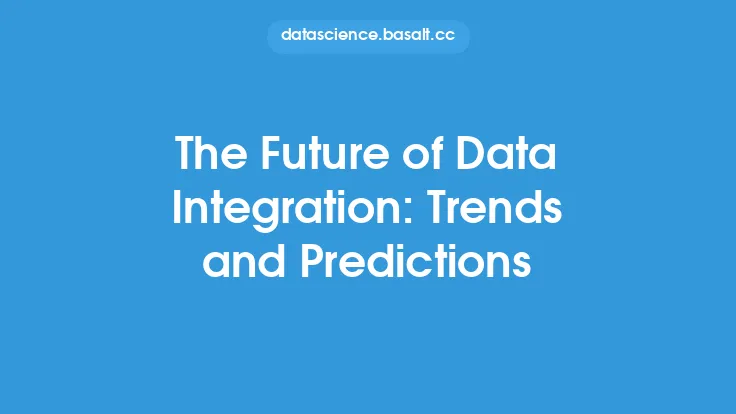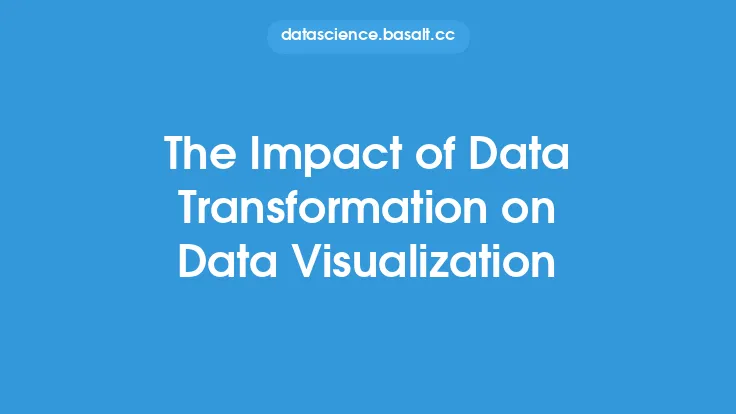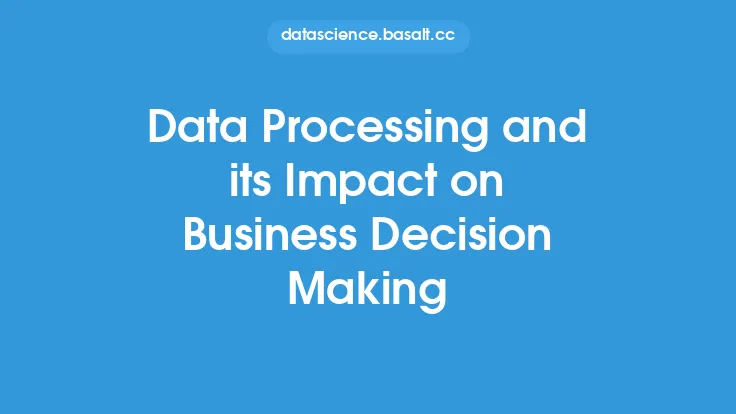The advent of cloud computing has revolutionized the way organizations design and implement their data architecture. With the ability to store, process, and manage large amounts of data in a scalable and on-demand manner, cloud computing has become an essential component of modern data architecture. In this article, we will explore the impact of cloud computing on data architecture design, highlighting the benefits, challenges, and best practices for designing a cloud-based data architecture.
Introduction to Cloud Computing and Data Architecture
Cloud computing provides a flexible and scalable infrastructure for storing, processing, and managing data. It offers a range of benefits, including reduced costs, increased agility, and improved scalability. Data architecture, on the other hand, refers to the design and structure of an organization's data assets, including the relationships between data entities, data flows, and data storage. The integration of cloud computing and data architecture has enabled organizations to design and implement more efficient, scalable, and flexible data architectures.
Benefits of Cloud-Based Data Architecture
The benefits of cloud-based data architecture are numerous. Firstly, cloud computing provides a scalable infrastructure that can handle large amounts of data, making it ideal for big data and analytics applications. Secondly, cloud-based data architecture enables organizations to reduce their capital and operational expenditures, as they only pay for the resources they use. Thirdly, cloud computing provides a flexible infrastructure that can be easily provisioned and de-provisioned, enabling organizations to quickly respond to changing business needs. Finally, cloud-based data architecture enables organizations to improve their data security and compliance, as cloud providers offer a range of security features and compliance certifications.
Challenges of Cloud-Based Data Architecture
While cloud-based data architecture offers many benefits, it also presents several challenges. Firstly, cloud computing introduces new security risks, such as data breaches and unauthorized access, which must be mitigated through robust security measures. Secondly, cloud-based data architecture requires careful planning and design to ensure that data is properly integrated, processed, and stored. Thirdly, cloud computing can introduce latency and performance issues, which must be addressed through careful optimization and tuning. Finally, cloud-based data architecture requires organizations to develop new skills and expertise, such as cloud computing, data engineering, and data science.
Cloud-Based Data Architecture Patterns
There are several cloud-based data architecture patterns that organizations can use to design and implement their data architecture. These include:
- Data Warehouse as a Service (DWaaS): This pattern involves using a cloud-based data warehouse to store and analyze data.
- Data Lake as a Service (DLaaS): This pattern involves using a cloud-based data lake to store and process raw, unstructured data.
- Cloud-Based ETL: This pattern involves using cloud-based extract, transform, and load (ETL) tools to integrate and process data.
- Serverless Data Architecture: This pattern involves using cloud-based serverless computing to process and analyze data without provisioning or managing servers.
Best Practices for Cloud-Based Data Architecture
To design and implement a successful cloud-based data architecture, organizations should follow several best practices. These include:
- Define Clear Data Governance Policies: Organizations should define clear data governance policies to ensure that data is properly managed, secured, and compliant.
- Use Cloud-Based Data Integration Tools: Organizations should use cloud-based data integration tools to integrate and process data from multiple sources.
- Implement Robust Security Measures: Organizations should implement robust security measures, such as encryption, access controls, and monitoring, to protect their data.
- Optimize Data Storage and Processing: Organizations should optimize their data storage and processing to improve performance, reduce costs, and improve scalability.
- Develop Cloud-Based Data Skills: Organizations should develop cloud-based data skills, such as data engineering, data science, and cloud computing, to support their cloud-based data architecture.
Cloud Computing Platforms for Data Architecture
There are several cloud computing platforms that organizations can use to design and implement their data architecture. These include:
- Amazon Web Services (AWS): AWS offers a range of cloud-based data services, including Amazon S3, Amazon Redshift, and Amazon EMR.
- Microsoft Azure: Azure offers a range of cloud-based data services, including Azure Blob Storage, Azure Data Lake Storage, and Azure Synapse Analytics.
- Google Cloud Platform (GCP): GCP offers a range of cloud-based data services, including Google Cloud Storage, Google Cloud Dataflow, and Google Cloud Bigtable.
- IBM Cloud: IBM Cloud offers a range of cloud-based data services, including IBM Cloud Object Storage, IBM Cloud Data Services, and IBM Cloud Pak for Data.
Conclusion
In conclusion, cloud computing has revolutionized the way organizations design and implement their data architecture. With its scalable, flexible, and on-demand infrastructure, cloud computing has enabled organizations to design and implement more efficient, scalable, and flexible data architectures. However, cloud-based data architecture also presents several challenges, such as security risks, latency, and performance issues, which must be addressed through careful planning, design, and optimization. By following best practices, such as defining clear data governance policies, using cloud-based data integration tools, and implementing robust security measures, organizations can design and implement a successful cloud-based data architecture that supports their business needs and goals.
